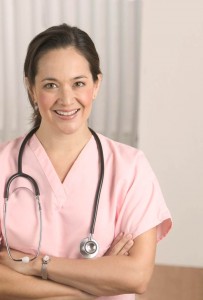What is endometriosis?
 Endometriosis is a common health problem in women and girls. In fact, this painful, chronic disease affects at least 6.3 million women and girls in the United States, 1 million in Canada, and millions more worldwide. Endometriosis can occur in any teen or woman who has menstrual periods.
Endometriosis is a common health problem in women and girls. In fact, this painful, chronic disease affects at least 6.3 million women and girls in the United States, 1 million in Canada, and millions more worldwide. Endometriosis can occur in any teen or woman who has menstrual periods.
What is it?
Endometriosis (pronounced en-doh-mee-tree-OH-suhs) gets its name from the word endometrium (en-doh-MEE-tree-um), the tissue that lines the uterus or womb. Endometriosis occurs when this tissue grows outside of the uterus on other organs or structures in the body.
Most often, endometriosis is found on the:
- Ovaries
- Fallopian tubes
- Tissues that hold the uterus in place
- Outer surface of the uterus
- Lining of the pelvic cavity
It can also grow spread to the vagina, cervix, vulva, bowel, bladder or rectum.
How do I know if I have endometriosis?
The most common symptom of endometriosis is pain in the lower abdomen or pelvis, or the lower back, mainly during menstrual periods.
Why?
The misplaced tissue develops into growths or lesions that respond to the menstrual cycle in the same way that the endometrium does: each month the tissue builds up, breaks down, and sheds. Menstrual blood flows from the uterus and out of the body through the vagina, but the blood and tissue shed from endometrial growths has no way of leaving the body. This results in internal bleeding, breakdown of the blood and tissue from the lesions, and inflammation — and can cause pain, infertility, scar tissue formation, adhesions, and bowel problems.
Symptoms of endometriosis can include:
- Very painful menstrual cramps
- Chronic pain in the lower back and pelvis
- Pain during or after sex
- Intestinal pain
- Painful bowel movements or painful urination during menstrual periods
- Spotting or bleeding between menstrual periods
- Infertility or not being able to get pregnant
- Fatigue
- Diarrhea, constipation, bloating, or nausea, especially during menstrual periods
What should I do if I think I have endometriosis?
Visit your doctor as soon as possible. Sometimes endometriosis is mistaken for other health problems that cause pelvic pain and the exact cause might be hard to pinpoint.
The only way for your doctor to know for sure that you have endometriosis is to perform a minor surgical procedure called a laparoscopy (lap-ar-OS-ko-pee) on you. Performed under anesthesia, a laparoscopy will allow your doctor to see the location, size, and extent of any endometrial growths. This will help you and your doctor make better treatment choices.
At Chouchani, Sayegh and Bagnarello OBGYN, we are experienced in the diagnosis and treatment of endometriosis. If you would like to know more about this condition or what you can do about it, please contact us any time. We are a premier OBGYN practice in Buffalo with locations in Kenmore, Alden and Willamsville.
